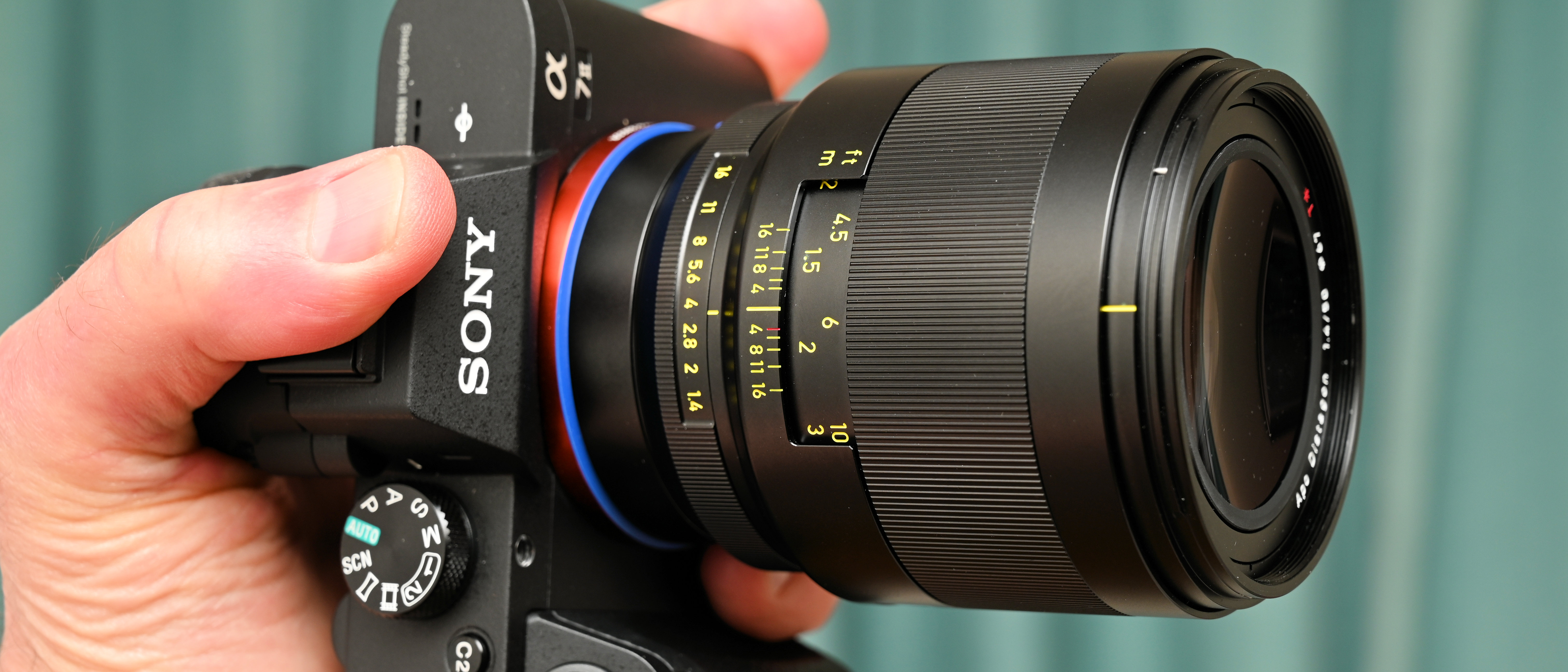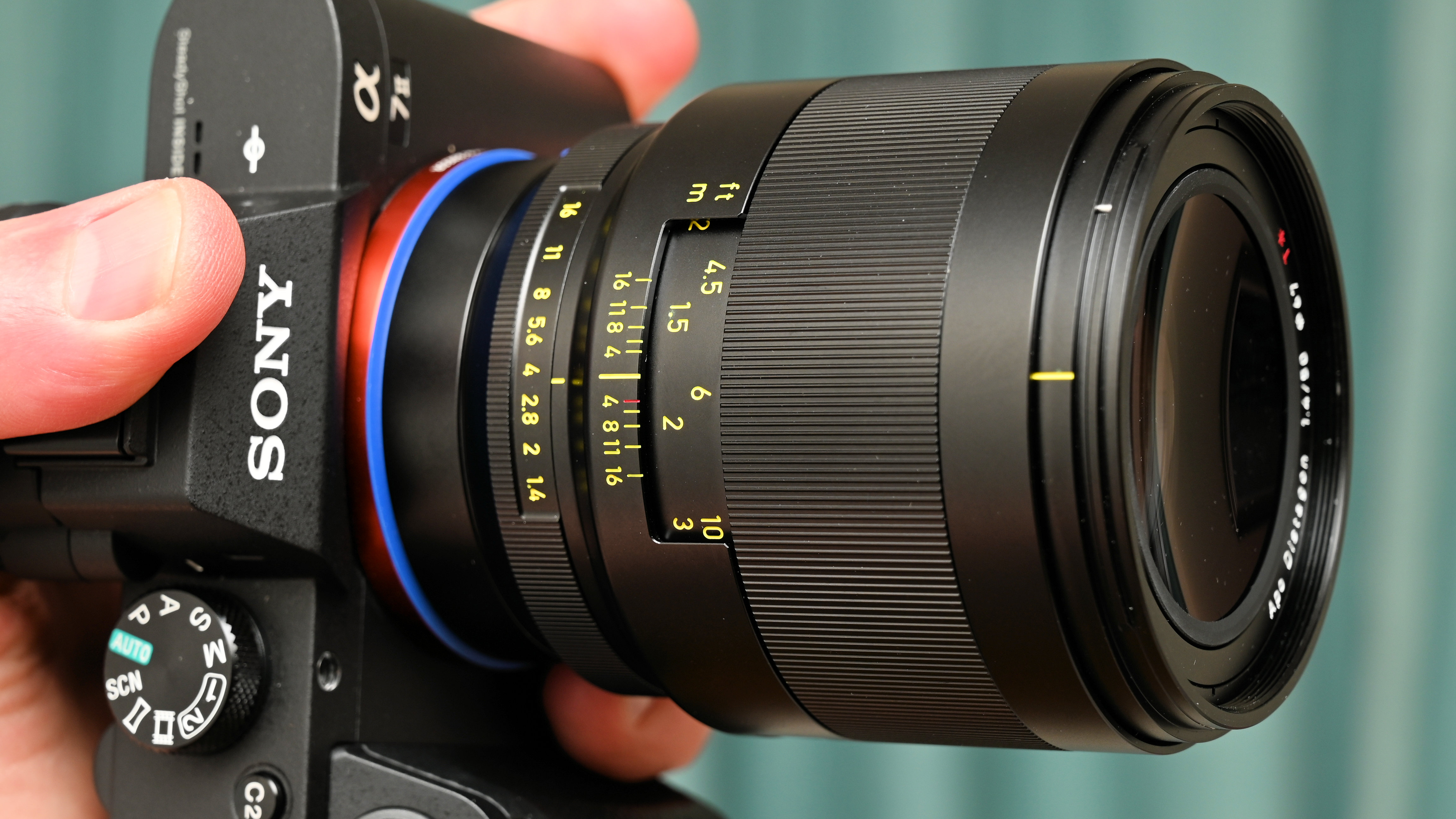
There aren’t many photographic companies with a longer or more illustrious heritage than Zeiss, originally founded in Germany all the way back in 1846. With bicentennial experience in the driving seat, the company knows a thing or two about lenses and is renowned for making some of the world’s finest optics.
If proof were needed, look no further than the Otus range of f/1.4 28mm, 55mm, 85mm and 100mm prime lenses, designed for Canon and Nikon DSLRs. They’ve achieved near-legendary status and picked up a string of awards along the way, but there’s been nothing new this decade. But fter six years on pause, Otus is now back in ‘ML’ mirrorless guise, kicking off with f/1.4 50mm and 85mm lenses.
They’re not the first Zeiss lenses for mirrorless cameras and without even counting Sony’s Zeiss-badged lenses. There are own-brand Zeiss Loxia manual-focus, full-frame lenses for Sony E-mount cameras. Then there are autofocus, full-frame lenses in the shape of Zeiss Batis for Sony E-mount cameras, along with Zeiss Touit APS-C format autofocus lenses in Sony E and Fujifilm X mount options. Like the original Otus lenses, the new Otus ML primes are manual-focus affairs, but the 50mm f/1.4 nevertheless aims to be one of the best standard prime lenses of all time.
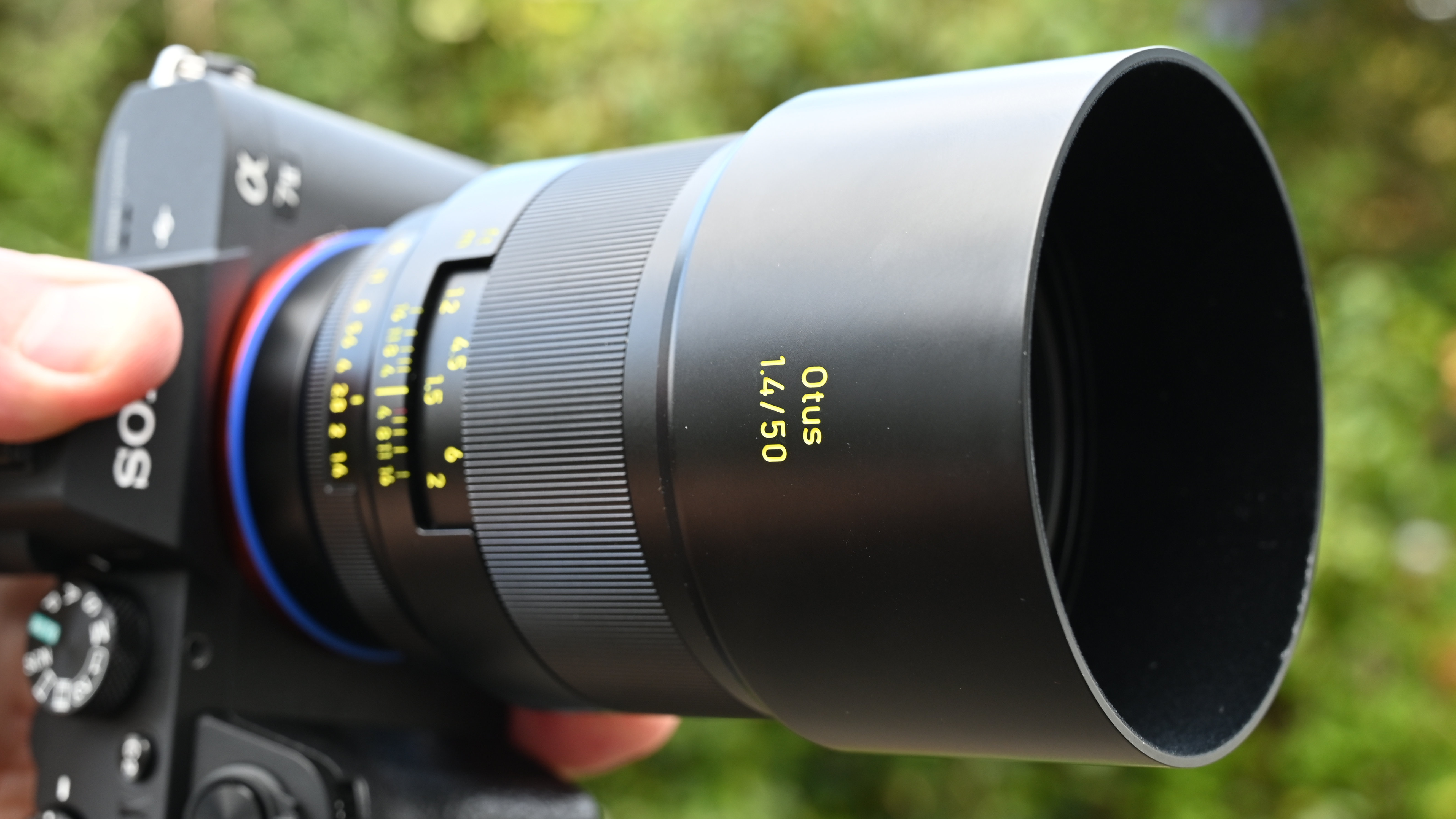
Zeiss Otus ML 50mm f/1.4: Specifications
Zeiss Otus ML 50mm f/1.4: Price
Let’s cut to the chase. The Zeiss Otus ML 50mm f/1.4 aims for optical perfection, based on the very finest glass. That doesn’t come cheap. It has a selling price of $2,499 / £2,100 / AU$4,025 but, in fairness, that’s much less expensive than the older Otus 55mm f/1.4 for DSLRs, which sells for around $3,990 / £3,400 / AU$6,388. The price of the new lens compares fairly favorably with top-ranking (albeit faster) 50mm primes including the Canon RF 50mm f/1.2L USM at $2,299 / £2,449 / AU$3,699, the Nikon Z 50mm f/1.2 S at $2,097 / £2,299 / AU$3,698 and the Sony FE 50mm f/1.2 G Master at $1,998 / £2,099 / AU$3,148.
Zeiss Otus ML 50mm f/1.4: Design & Handling
Let’s address the elephant in the room. You might well be thinking, “All that money for a modern lens that doesn’t even have autofocus? That’s nuts!” And you certainly wouldn’t be the only one. But hang on a minute. Zeiss argues that ‘manual focusing is an experience in itself. Zeiss Photography Category manager Petra Visuri goes further still, saying “Manual focusing is more than a method – it’s a way for photographers to connect deeply with their creative power and craftsmanship, enabling both unparalleled control and artistic freedom.”
For my part, I’ve known professional photographers who seem to have rangefinders for eyeballs and the kind of muscle memory that manually dials in the correct focus distance in a trice, without even thinking about it. Sadly, I’m not one of that elite band. Even so, aids like focus-peaking and a magnified live preview right in the viewfinder make precise manual focusing with the Otus ML much easier with mirrorless cameras, compared with a DSLR.
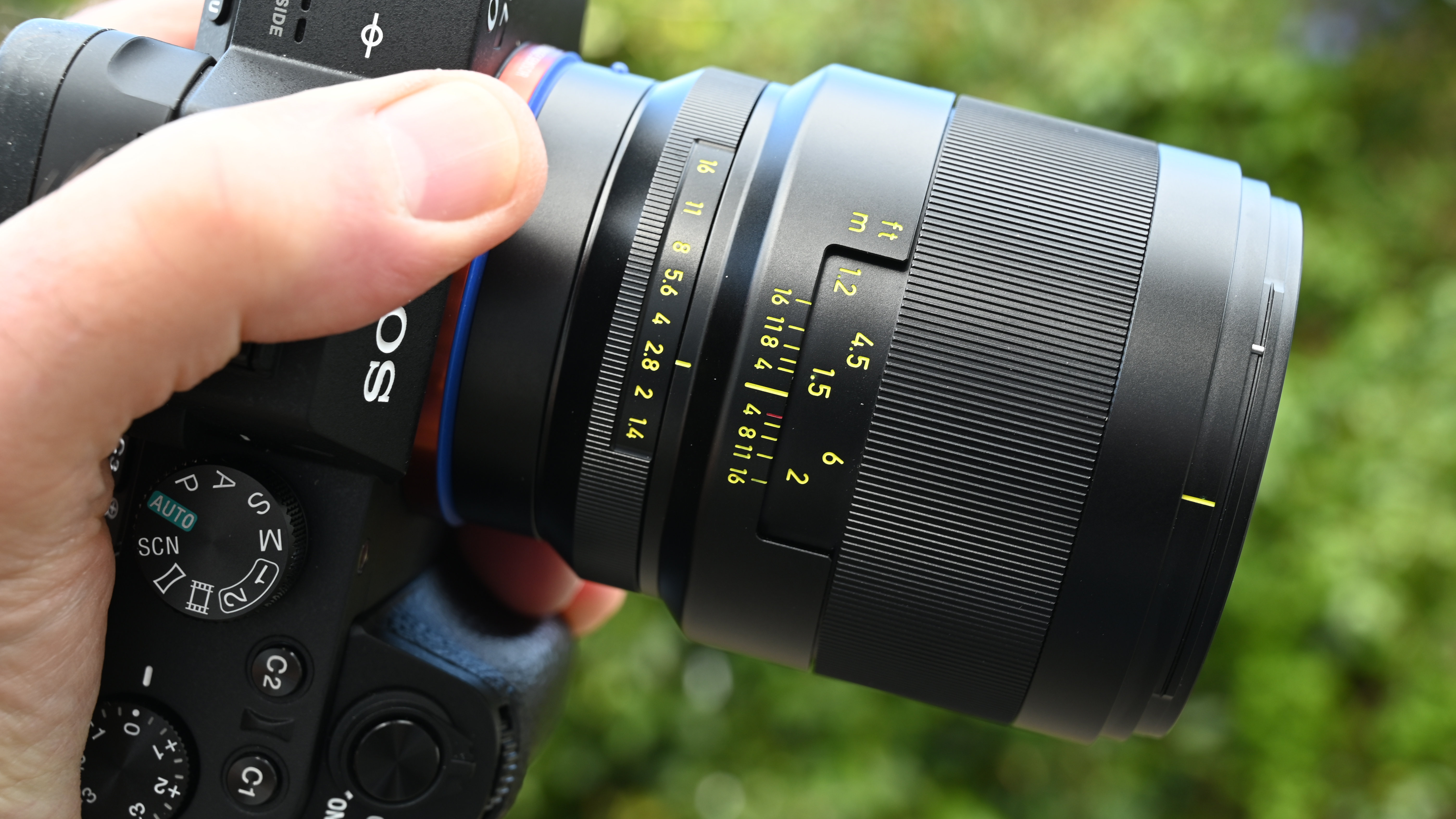
As I’d fully expect from a Zeiss manual-focus lens, the focus ring works with a really fluid feel and a very long throw (or rotational travel), in this case of 259.5 degrees. Physically rather than electronically coupled to a helicoid drive system, the focus ring is wonderfully tactile. The only downside is that with such a long throw of nearly three-quarters of a full circle, it can a bit of a journey focusing from the minimum distance of 0.5m all the way to infinity, or visa versa. In practice though, that’s something you seldom or maybe never need to do in real-world shooting. I could be unkind and say that’s the sort of thing that autofocus lenses do, when they’re hunting back and forth trying and failing to acquire a target.
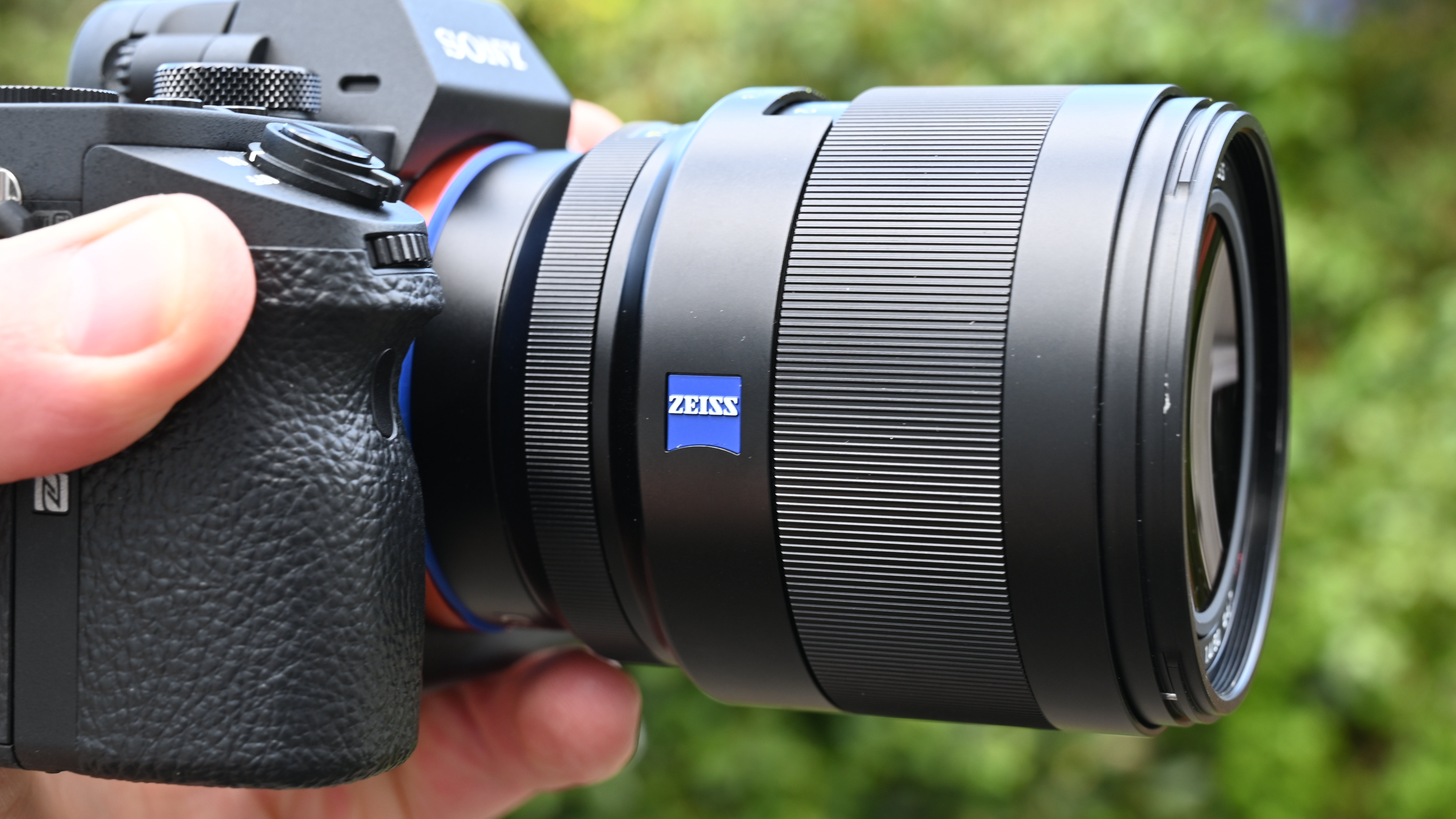
It's not just the focusing that’s manual. The aperture is also adjusted by a physical control ring and, unlike with many lenses that feature an aperture ring, there’s no ‘Auto’ position for camera-driven control. That precludes shooting in Program and Shutter-priority modes. You might feel the limitations are a complete pain but, if you’re already sold on manual focusing, you might find the insistence on using the aperture ring is an extra bonus that adds to the ‘hands-on’ shooting experience.
Either way, the aperture ring operates in one-third click steps from wide-open at f/1.4 down to f/11. The change from f/11 to the narrowest aperture of f/16 operates in a single click step for that full and final f/stop. The aperture diaphragm itself is based on 10 curved blades and is particularly well-rounded as a result, aiming to retain maximum quality for bokeh when stopping down a little.
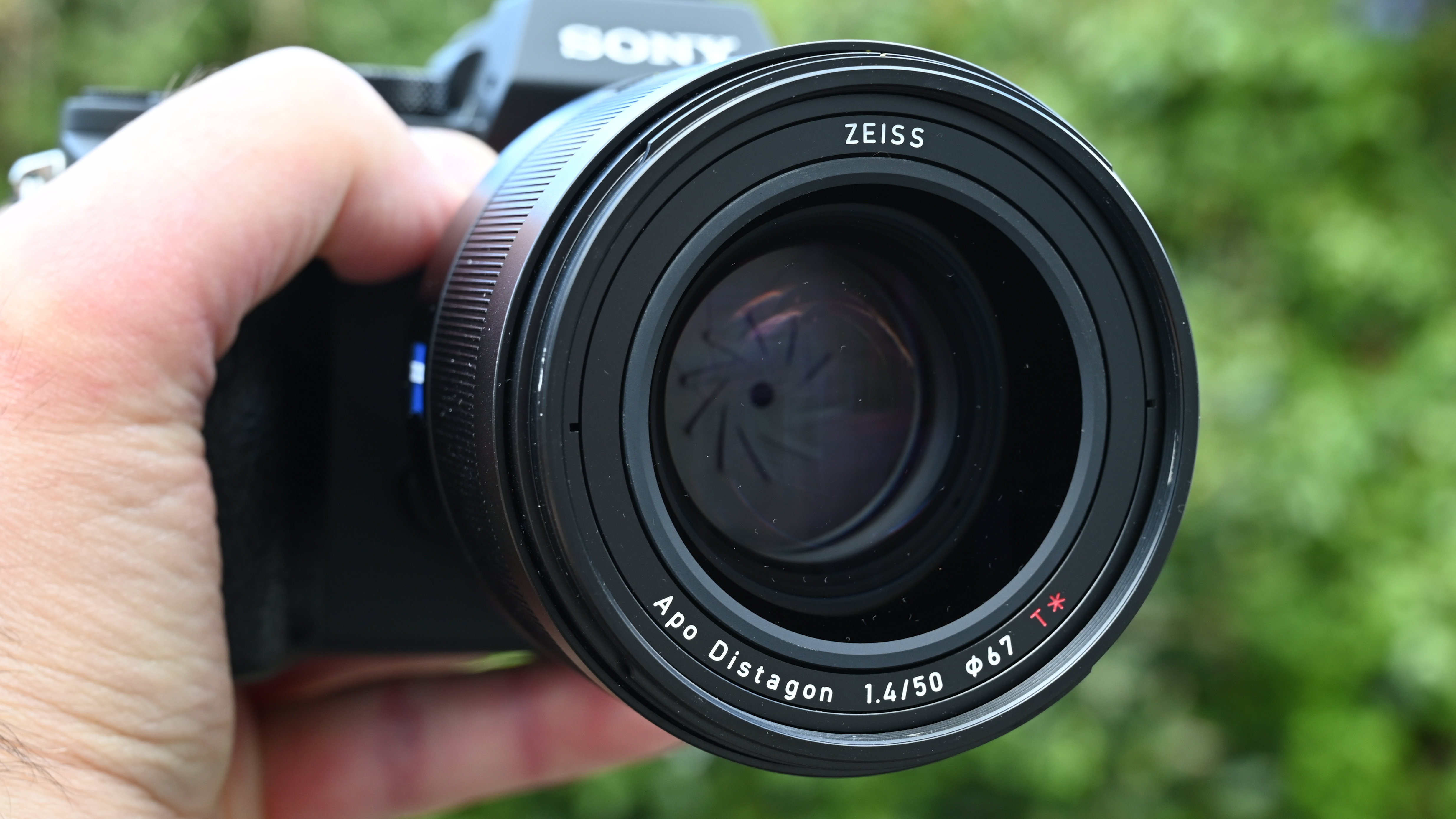
If you’re into shooting video as well as stills (isn’t everyone, these days?) you’ll prefer a stepless aperture control ring. The Zeiss obliges with a click/de-click option. Again, that’s certainly not unique in the current market.
However, while most lenses with this facility have a switch for making the change, the Otus sticks with a method that I’ve seen on a few Zeiss lenses before. It’s supplied with a small key - the only part of the kit that frankly looks and feels a bit cheap. It’s a bit like a miniature flat-bladed screwdriver. To change between click and de-click modes for the aperture ring, you need to take the lens off your camera and make the adjustment via a small flat-headed screw-like pin in the lens mount.
I suppose you could argue that at least this makes it impossible to change between click and de-click options accidentally, but I think it’s a bit of a chore.
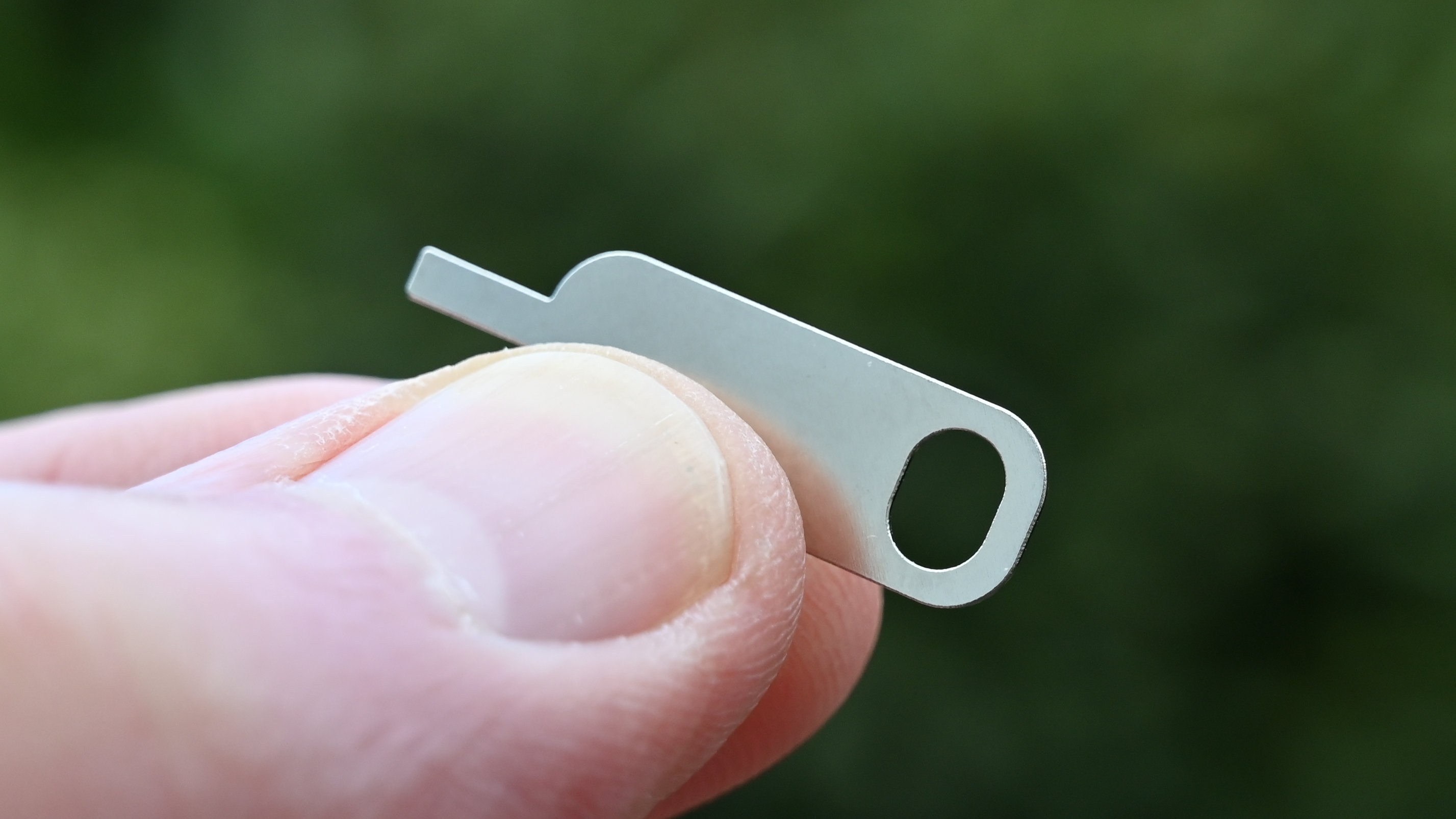
Control over focusing and aperture come together with a depth of field scale between the two rings. It’s marked for apertures of f/4, f/5.6, f/8, f/11 and f/16. Unlike with many autofocus lenses and more especially zoom lenses that I’ve tried this with in the past, the markers proved pretty accurate in my tests. They enable traditional ‘zone focusing’, where you can set the near and far limits covered by the focus distance to retain sharpness within a specified zone.

The markings for focus distance (in feet and meters), depth of field and aperture are all colored in a rather garish shade of yellow, inherited from the original Otus lenses. Again, the coloring can split opinion. Some might think it looks a bit cheap but, from a practical point of view, the bright yellow markings are very easy to read, even under extremely low lighting conditions.
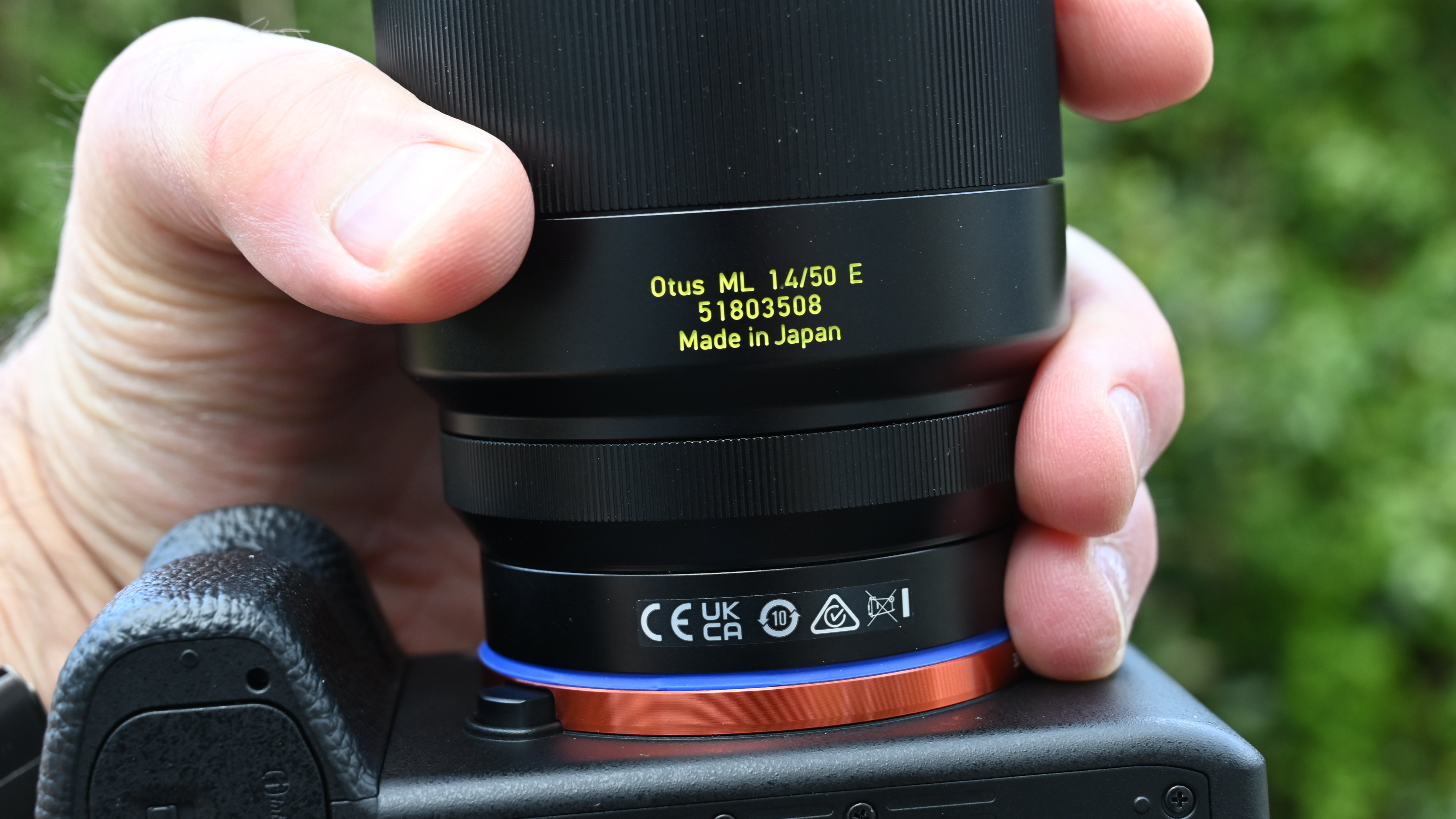
Let’s talk glass. Based on Zeiss’s famed Distagon (retrofocus) design, the Otus ML takes its optical cues from the original Otus 55mm lens. It makes extensive use of elements with anomalous partial dispersion and features two aspherical elements. The aim is not only to enhance sharpness and clarity across the entire image frame, but to minimize both axial and lateral chromatic aberrations. Going further still, the lens strives for premium color rendition, micro-contrast and that elusive (mythical?) ‘3D pop’ which is often attributed to top-notch Zeiss lenses.
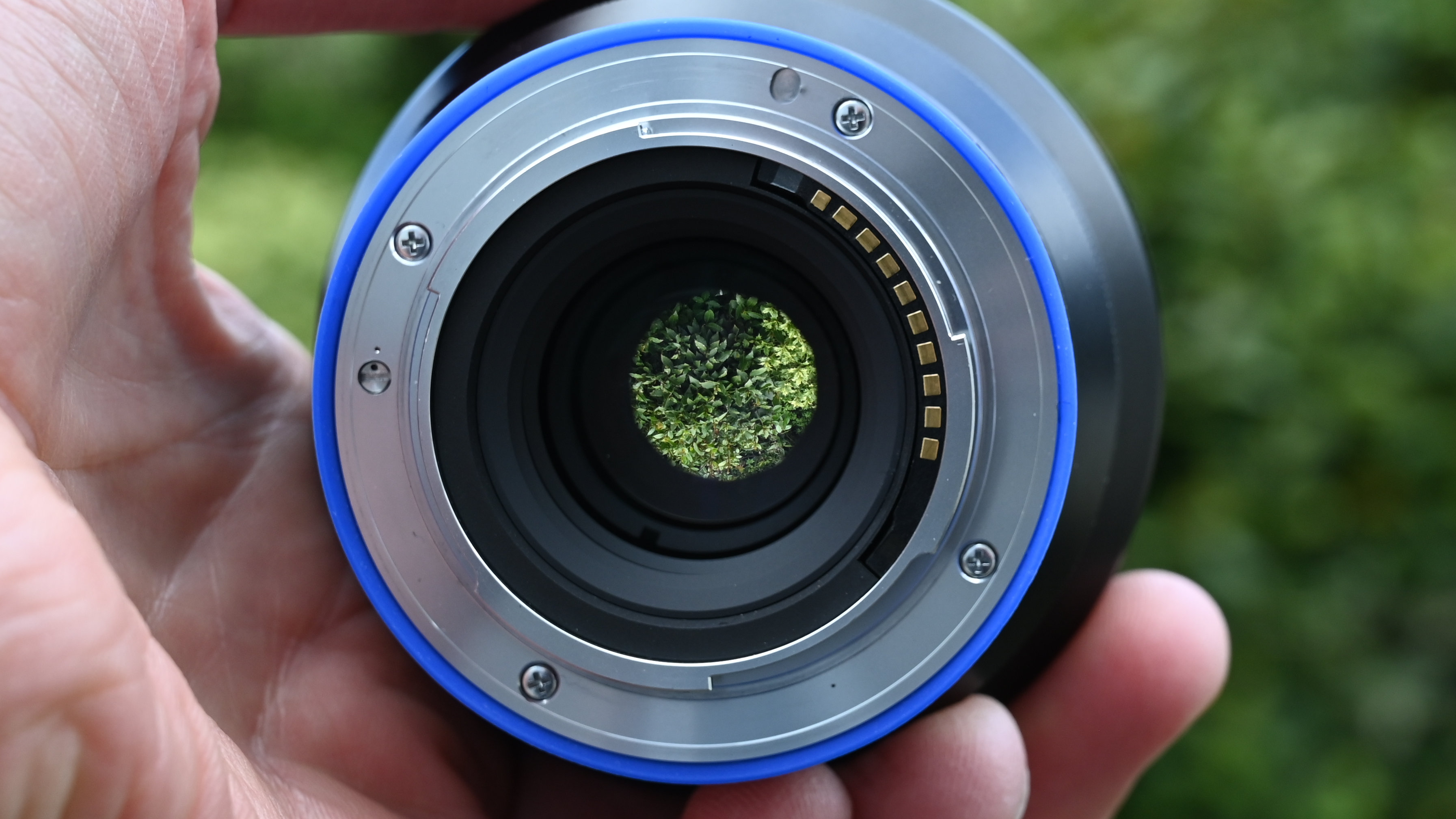
All that posh glass is encased in a full metal jacket, which extends to the mounting plate, barrel, knurled aperture and focus control rings and even to the circular-profile hood. The last of these is a similarly high-quality item, complete with black flocking on the inner surface to minimize reflections.
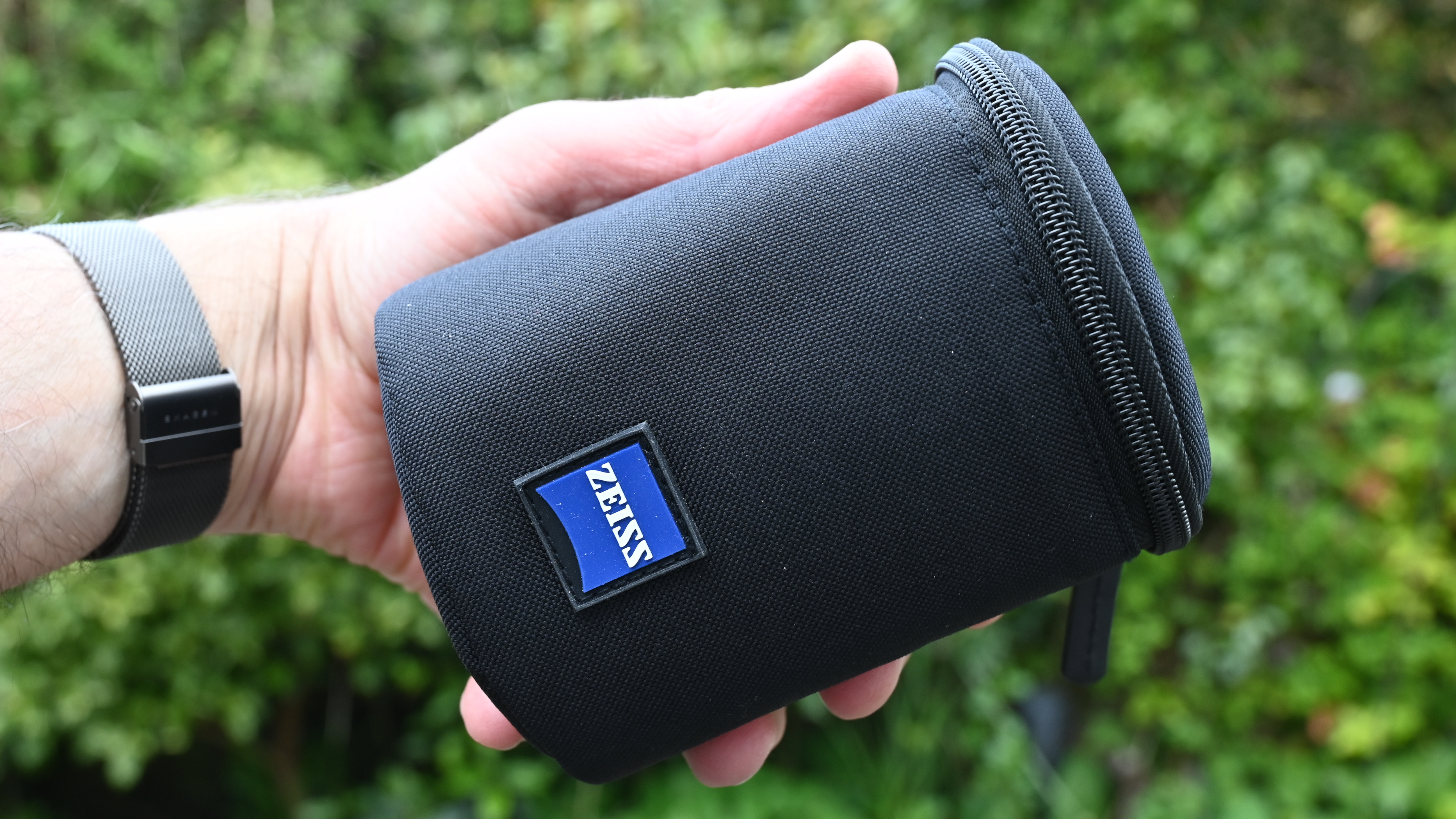
Zeiss Otus ML 50mm f/1.4: Performance
In my real-word tests, the Otus ML 50mm delivered stunning levels of sharpness, even when shooting wide-open, from the center of the image frame right out to the extreme edges and corners. Equally important or even more so, in my opinion, the quality of bokeh proved to be beautifully soft and dreamy, with a really natural roll-off between focused and defocused areas. Color rendition is superb, while contrast and clarity are exemplary. That ‘3D pop’ accolade is well earned, with a truly three-dimensional look to images.

Axial chromatic aberration (also known as bokeh fringing) isn’t entirely non-existent but is of a very low order, even when shooting wide-open at f/1.4. Lateral chromatic aberration, which can be equally problematic at medium to narrow apertures instead of just at wide apertures, is negligible even at the edges and corners of the image frame where it tends to be more noticeable. There’s the slightest touch of pincushion distortion but not enough to be noticeable in most shooting scenarios, even when uncorrected.

Manual focusing is an acquired taste and a skill that comes with practice. It’s not something that comes naturally to most photographers nowadays, but manual focusing does work very well with this lens, adding to the overall performance and feelgood factor.

Zeiss Otus ML 50mm f/1.4: Sample Images
Pretty much any lens can make everything look nice on a bright sunny day. Dull, overcast conditions are more of a challenge, which was the prevailing weather for this gallery of images, shot in the UK city of Bath.





















Zeiss Otus ML 50mm f/1.4: Lab Results
We run a range of lab tests under controlled conditions, using the Imatest Master testing suite. Photos of test charts are taken across the range of apertures and zooms (where available), then analyzed for sharpness, distortion and chromatic aberrations.
We use Imatest SFR (spatial frequency response) charts and analysis software to plot lens resolution at the center of the image frame, corners and mid-point distances, across the range of aperture settings and, with zoom lenses, at four different focal lengths. The tests also measure distortion and color fringing (chromatic aberration).
Sharpness:
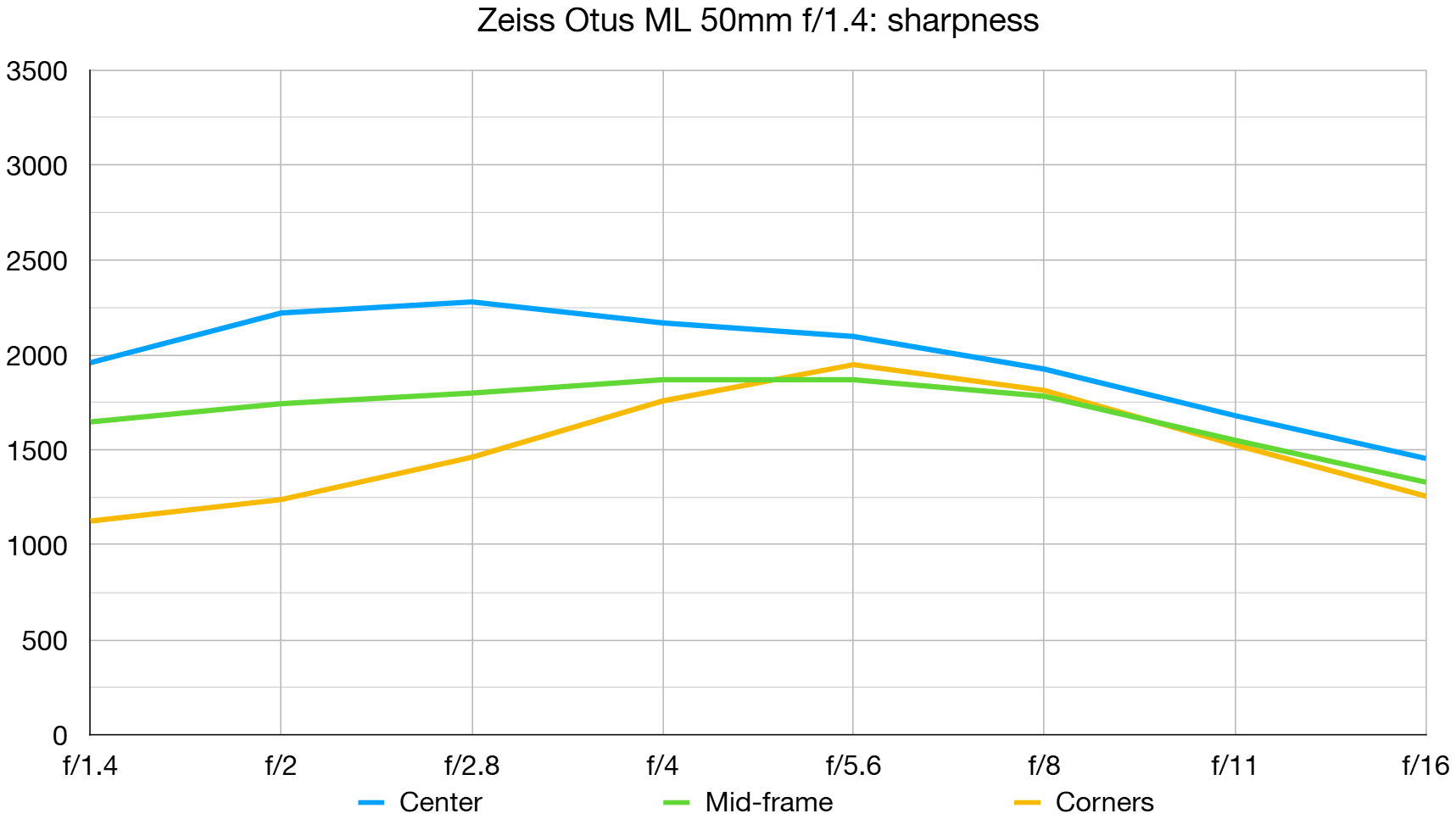
The Otus 50mm doesn’t deliver the best lab scores for sharpness that we’ve ever seen but in real-world testing, sharpness, micro-contrast and clarity are all exceptional, right across the entire image frame and throughout the aperture range.
Fringing:
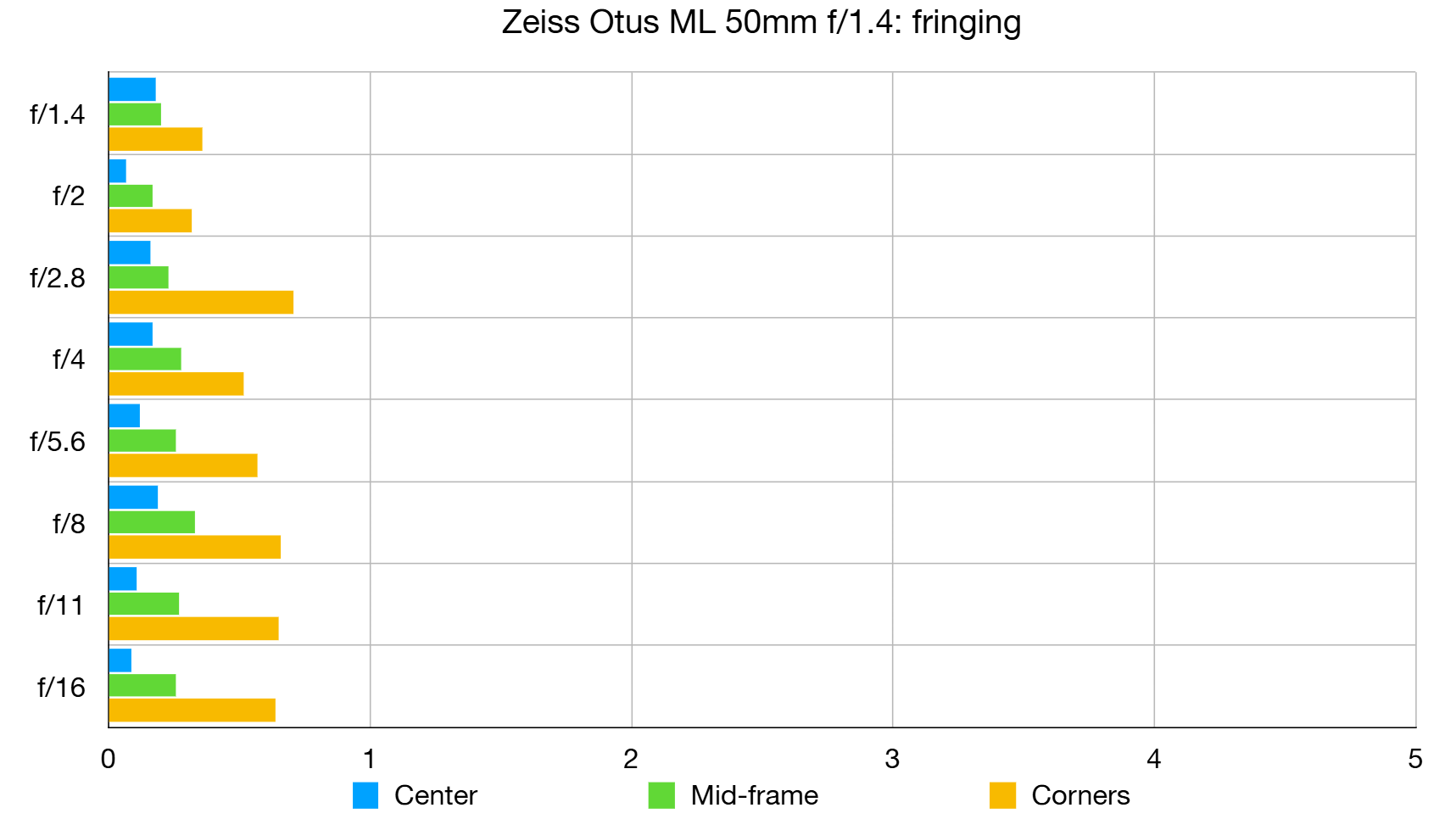
Lateral chromatic aberration is negligeable even out at the extreme edges and corners of the image frame. And that’s with automatic in-camera correction disabled.
Distortion: 0.67
There’s a very slight touch of pincushion distortion when uncorrected but it’s generally almost impossible to spot in real-world shooting.
Zeiss Otus ML 50mm f/1.4: Verdict
